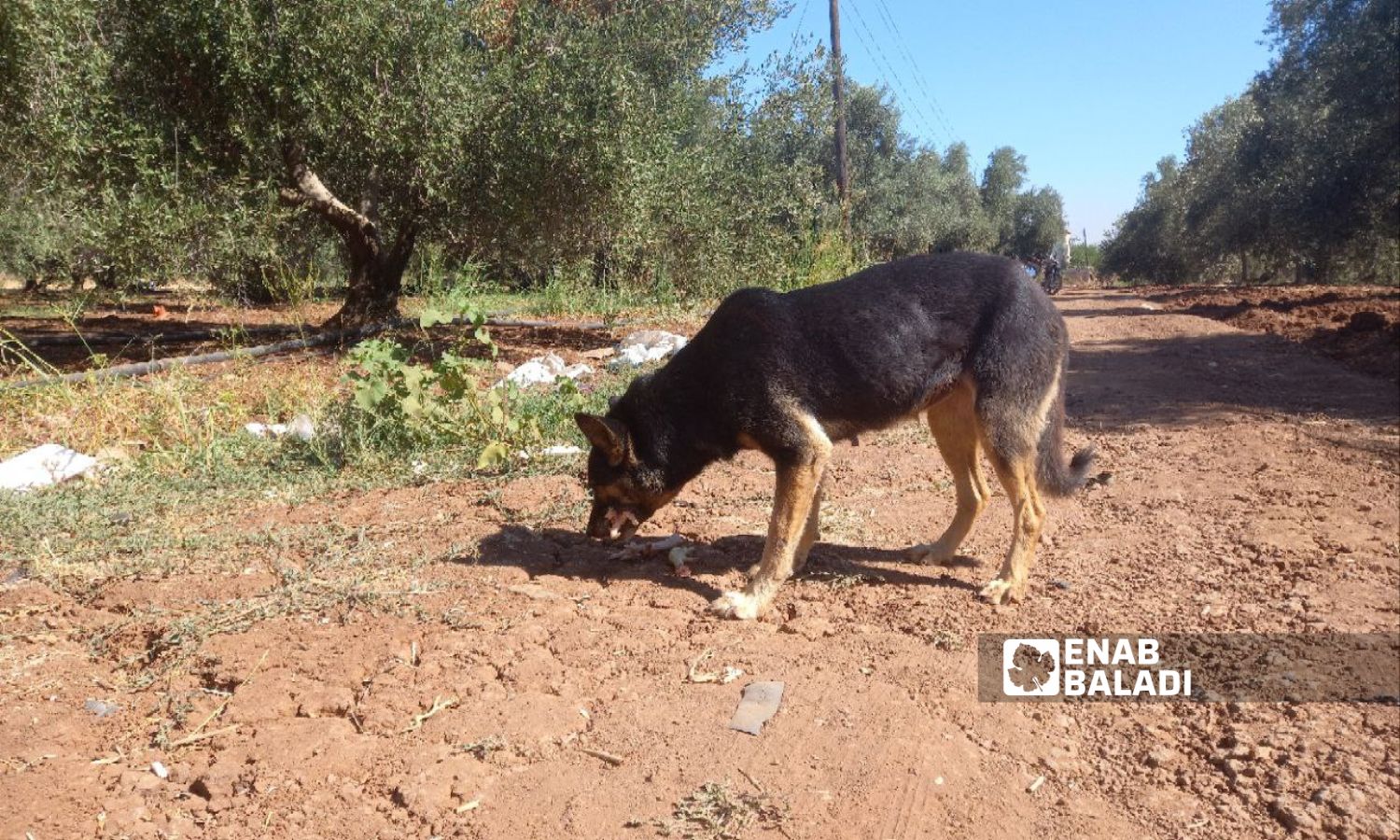



Daraa – Halim Muhammad
The western countryside of Daraa governorate, southern Syria, is witnessing an increasing spread of stray dogs that target livestock, causing great material losses to their owners.
This situation is forcing local locals to kill dogs that caught the rabies virus and bury them for fear of transmitting the infection to other animals, amid the absence of any movement by the municipality on the one hand and the failure to provide treatment medicines by the Syrian regime government on the other hand.
Ahmed, 40, of al-Fawar town, told Enab Baladi that stray dogs caused the death of three cows in the town last week, and the municipality did not move to get rid of them or treat them.
He added that young men from the town killed rabid dogs and targeted any dog showing signs of rabies in the vicinity of their homes, pointing out that these dogs pose a great danger to animals and residents.
The price of a cow ranges between 15 million and 20 million Syrian pounds, and the price of a sheep exceeds one million pounds. These livestock are a source of livelihood for their owners, according to Ahmed.
($1=13,900 SYP) according to the S-P Today website, which covers the trading rate of the Syrian pound to the dollar.
Previously, Mohammad, 35, used to let his livestock, consisting of five cows and ten sheep, sleep under the trees with the high temperatures in the summer, and with the increasing number of incidents of them being bitten by rabid dogs, he was forced to enter the livestock into the barn and close the door on it, for fear of being targeted and subjected to rabies.
Ahmed, a veterinary assistant who preferred not to reveal his full name for security reasons, told Enab Baladi that rabies infections increased during the summer months, coinciding with the high temperatures, and the behavior of the affected dog can be distinguished through a number of symptoms.
The dog appears excessively aggressive with a change in its barking sound as a result of laryngospasm, in addition to frenzy and weakness, indicating that the spread of waste on the roadsides attracts dogs and constitutes an additional factor for injury.
The infection is transmitted through the saliva of the infected dog and infects cows, sheep, and rabbits, while the assistant veterinarian indicated that there is no anti-vaccine to protect animals from infection in Daraa.
In the event of infection, the cattle show signs of agitation, red eyes, poor appetite, salivation, pharyngeal spasm, and difficulty swallowing, urinating, and defecating, according to the assistant veterinarian.
In the event that livestock is bitten by a rabid dog, it must be disposed of and buried at a depth of four meters to ensure that the infection does not spread on the one hand and that dogs are not able to exhume its corpse and transmit the infection to it.
In the event that a resident is bitten by a dog, he must be taken to the nearest health center and given the necessary medications.
One of the basics of treatment, according to Dr. Ziyad Mahameed, director of the Daraa al-Balad clinic, is washing the wound with soap and water, applying sterile materials to it, and then giving the patient the anti-rabies serum.
Mahameed told Enab Baladi that the vaccine is missing in government centers and is available in private pharmacies.
One of the most prominent problems facing citizens is the absence of the municipal council’s actions to get rid of stray dogs.
Walid, 40, a resident of the town of Tell Shihab, told Enab Baladi that getting rid of these dogs is the responsibility of the municipal council.
Walid said that the increasing cases of rabies among dogs is due to the failure to remove the garbage and the inaction in finding a solution for the stray dogs, which have become a source of real concern for the residents of the area.
Not only are rabid dogs dangerous to animals, but they can also attack humans.
Youssef, 38, of Amouriya town in the western countryside of Daraa, told Enab Baladi that his son was seriously injured in the face due to a rabid dog bite, and after he was taken to the health clinic, he bought rabies vaccines from private pharmacies at his personal expense, and his son needed three doses over the course of a whole month.
According to the official Syrian News Agency (SANA), the number of cows in Daraa is 43,264, while there are 779,139 sheep and 119,54 goats.
Last July, the Animal Health Department in the Daraa Agriculture Directorate said that it had launched a campaign to vaccinate sheep and cows against a number of diseases, including foot-and-mouth disease and Enterotoxaemia, without mentioning “rabies.”
Rabies affects both domestic and wild animals and is transmitted through saliva, through biting, scratching, or direct touch of the mucous membrane of the eyes, mouth, or open wounds, according to the World Health Organization (WHO).
if you think the article contain wrong information or you have additional details Send Correction